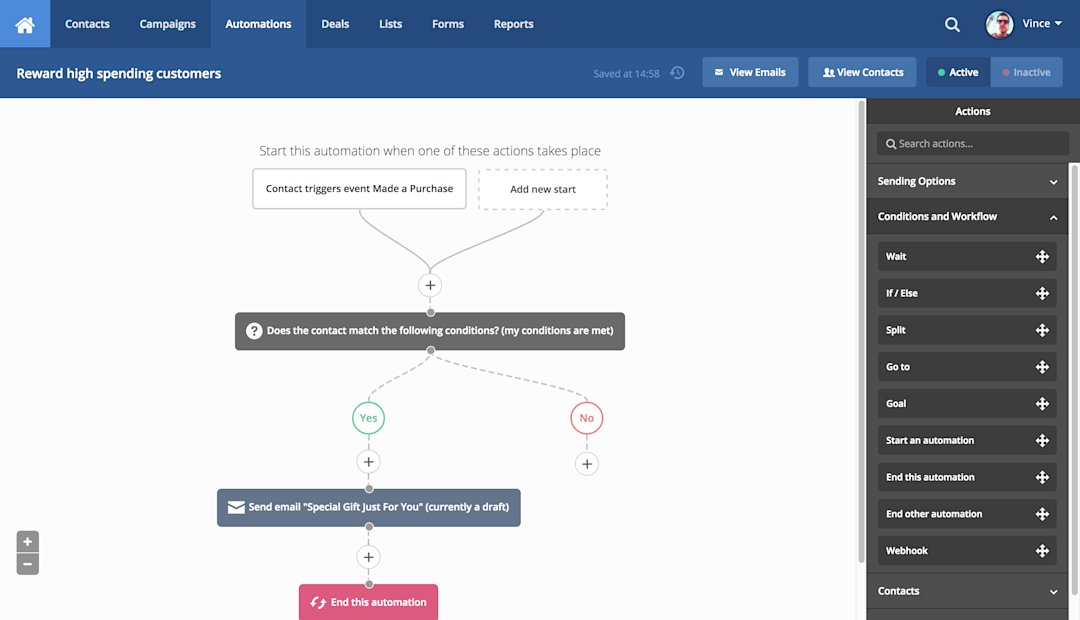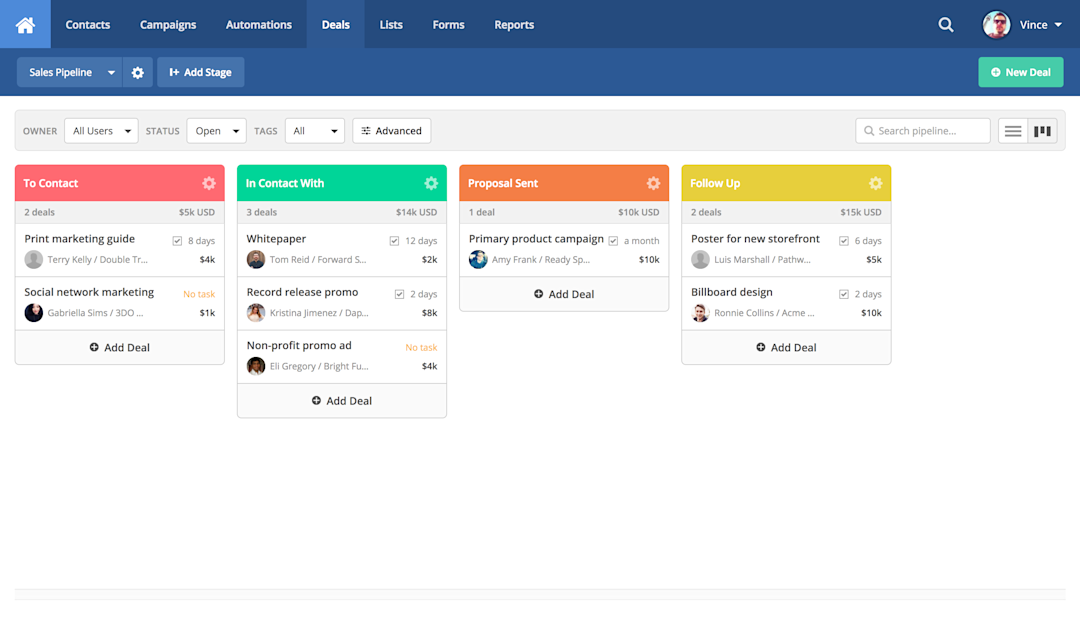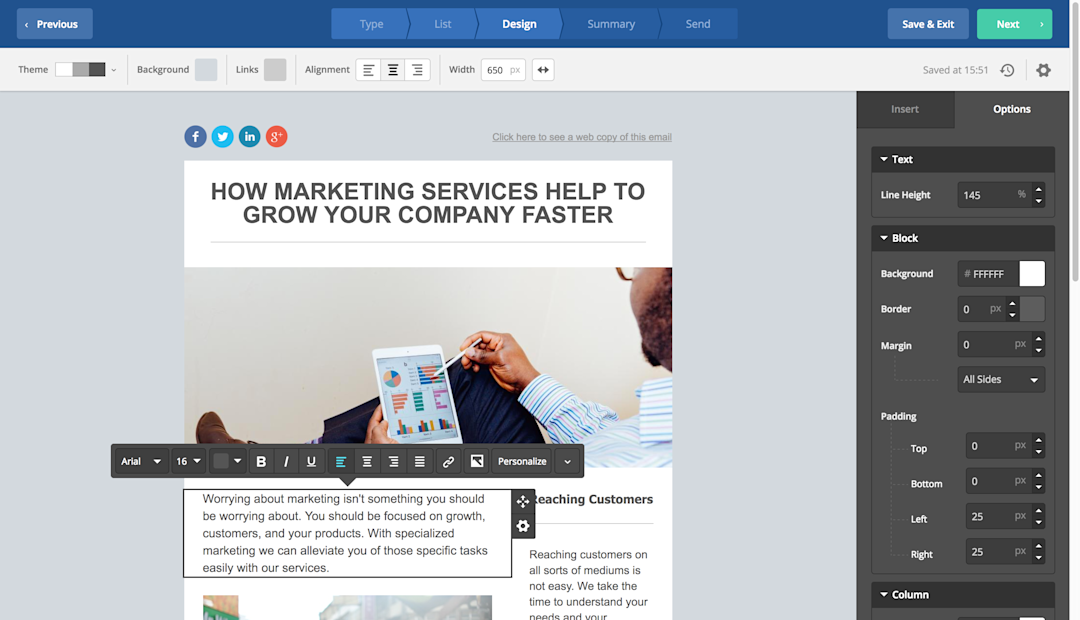ActiveCampaign
Marketing automation and email
Enables email segmentation, subscription forms, dynamic content, and split testing for email marketing
Provides free templates, subscription forms, image hosting, and a drag-and-drop interface so marketers can create and automate email campaigns to segmented users based on site activity, social interests, and campaign interactions
Automates welcome emails, birthday emails, and trigger campaigns based on custom actions or completed sales events
Supports custom event tracking, segment creation, setting automation goals, and communicating with SMS and site messaging
Provides sales automation, lead scoring, and a Gmail extension so marketers can automate sales process, define and track custom funnels, and integrate with social profiles to score leads based on interactions, interest, site activity, and social media details
How ActiveCampaign works
ActiveCampaign uses two kinds of tracking to get details on your users and automate email workflows: Site Tracking and Event Tracking. Site Tracking, which tracks page-level interactions, requires the installation of a standard JavaScript code snippet on each page you wish to track. Event Tracking, which tracks event-level interaction, is more complex and requires a customized code snippet in each part of your code that corresponds to a user action you want to track. ActiveCampaign allows you to use their code wrappers for this, with libraries in languages like PHP, Node, and Python. These code snippets will need to be added on top of any other tracking code you use for those events.
If you want to get customer data out of ActiveCampaign and into your data warehouse there are a few options. Most people end up building a custom ETL pipeline that pulls from the ActiveCampaign API on a regular basis. Building the pipeline also means handling its maintenance over time, however. The “build it” option gets more complex if you want to stream email events like deliver, click, and open in realtime. There are also expensive enterprise ETL tools and open source options, but those usually still require a lot of planning and configuration to get the data you want in the format you want it.



Get more out of ActiveCampaign with Segment
With Segment, all the customer data you’re collecting from your websites, mobile apps, or servers gets sent directly into ActiveCampaign. The result is that you don’t need to do any additional installation or duplicate instrumentation of code, and you can utilize both Site Tracking and Event Tracking from ActiveCampaign. ActiveCampaign is also a Segment cloud source. Being a cloud source means that Segment can automatically collect events _from_ ActiveCampaign, like Email Delivered and Email Opened, forward them to your other tools, and even load them into your data warehouse. This allows for a powerful bi-directional flow of data to and from ActiveCampaign, managed by Segment.
By using ActiveCampaign as a source of data in your favorite BI or analytics tool, you’ll be able to analyze your email campaigns in SQL or through drag-and-drop reports. You’ll also be able to join your ActiveCampaign data with all the other data you’re sending through Segment to analyze the down-funnel effects of your email campaigns.
Similar integrations
View all integrationsIntegrate ActiveCampaign with Segment
Segment makes it easy to set up ActiveCampaign.



